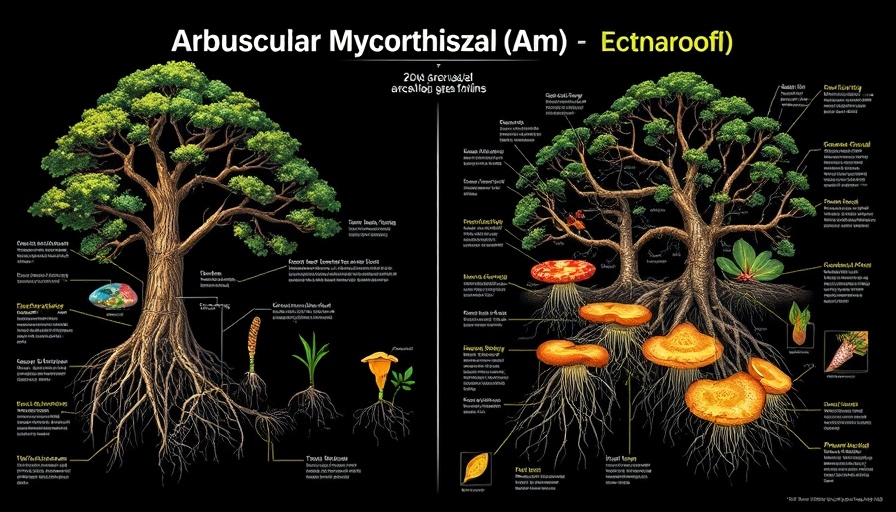
Unveiling the Invisible: The Crucial Role of Mycorrhizal Fungi
The underground fungi networks that help sustain Earth’s ecosystems are in urgent need of conservation action, warns new research from the Society for the Protection of Underground Networks (SPUN). These intricate networks of mycorrhizal fungi, the unsung heroes of our planetary ecosystem, are vital for nutrient cycling, soil health, and plant resilience. Dr. Toby Kiers, Executive Director of SPUN, poignantly states, "If we disrupt these critical ecosystem engineers, forest regeneration slows, crops fail and biodiversity above ground begins to unravel.”
Nature’s Hidden Lifeline: How Fungal Networks Function
Mycorrhizal fungi are essential in forming underground connections that enable plants to share nutrients and water. They effectively act as a planetary circulatory system, pulling over 13 billion tons of carbon into soils every year—about a third of global fossil fuel emissions. Without these networks, not only do individual plants thrive less, but whole ecosystems lose their resilience against climate extremes.
Research indicates that 90 percent of mycorrhizal fungi biodiversity hotspots lie in unprotected ecosystems, amplifying the urgency for action. Conservation efforts must prioritize these areas to maintain the delicate balance our environment relies upon.
A Wake-Up Call for Conservation
Mapping these underground networks is groundbreaking. Using over 2.8 billion fungal sequences from 130 countries, SPUN has produced detailed biodiversity maps of underground mycorrhizal communities. This tool is pivotal for conservationists and policy-makers as it unveils areas requiring immediate attention. Kiers highlights, “For too long, we’ve overlooked mycorrhizal fungi in climate change strategies, conservation agendas, and restoration efforts.” The hourglass is running out for mycorrhizal networks, and we need to act now.
Raising Awareness and Taking Action
As awareness of mycorrhizal fungi’s impact grows, communities must reconsider how their own practices relate to these underground networks. Sustainable agricultural techniques, soil conservation practices, and forest management can enhance the vitality of these important ecosystems. Every action counts in preserving these invisible connections that underpin life on Earth.
Future Predictions: Impacts of Inaction
Looking ahead, if mycorrhizal networks continue to degrade due to lack of protection, we could face significant declines in crop yields and biodiversity. The interdependencies among species, even those that are not visibly connected, point to the notion that if we ignore one critical piece of this puzzle, the entire structure may falter. The future success of our food systems depends heavily on the health of these fungal networks.
Conclusion: A Call for Collective Responsibility
As stewards of the Earth, it is imperative we engage actively in preserving these underground ecosystems. While the challenges can seem daunting, there is hope in collective action and informed choices. By integrating the health of mycorrhizal fungi into broader environmental strategies, we can foster resilience against climate change and promote sustainability.
 Add Row
Add Row  Add
Add 



Write A Comment